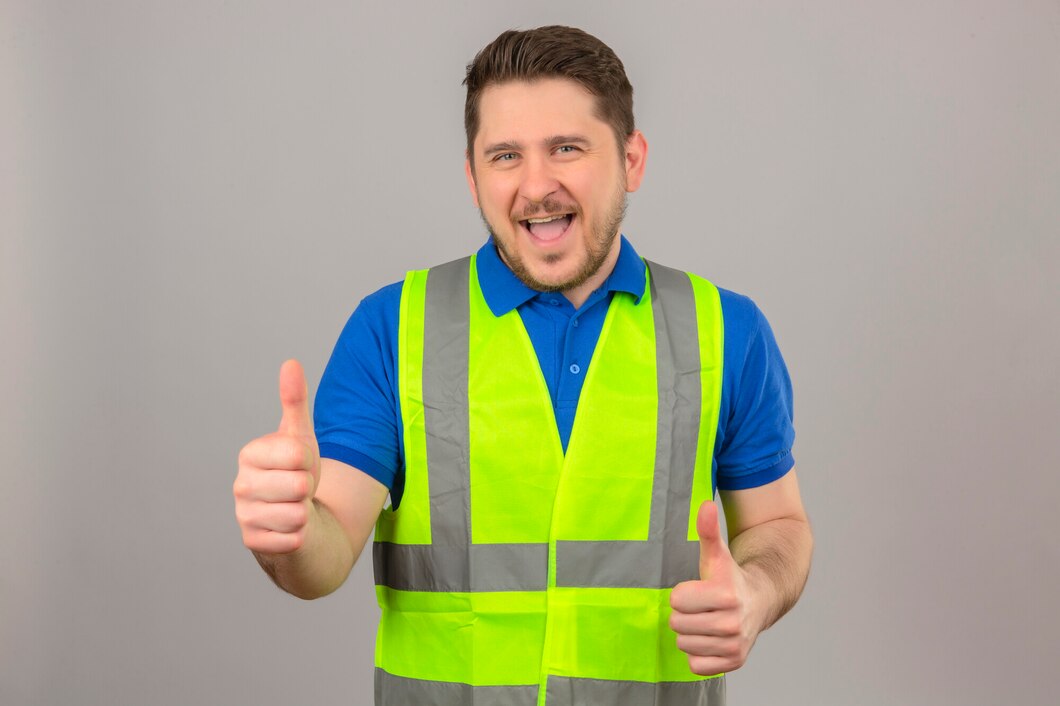Choosing the right safety vest can seem tricky, but it’s essential for both comfort and visibility on the job. In this guide, we’ll help you find the perfect fit by showing you how to measure yourself, understand size charts, and select the best vest for your work environment. By the end, you’ll have all the information you need to make a confident decision.
With our expert advice, you’ll easily find a vest that meets safety standards and keeps you comfortable. Plus, we’ll share tips on how to complete your workwear for added protection.
For a comprehensive look at safety vests, check out our main buyer’s guide.
Understanding Safety Vest Sizes
Safety vests often follow general sizing guidelines similar to standard clothing sizes. However, variations in cut and design mean measuring yourself accurately is crucial. Most manufacturers use chest measurements and overall body length as primary sizing indicators.
| Size | Chest Measurement (cm) | Body Length (cm) |
| Small | 84–92 | 62 |
| Medium | 93–100 | 64 |
| Large | 101–108 | 66 |
| XL | 109–116 | 68 |
| XXL | 117–124 | 70 |
| 3XL+ | 125+ | 72+ |
The sizing information in the chart is a general idea. To get your exact sizing, please consult with the suppliers directly.
How To Measure Yourself for the Perfect Fit
To ensure the best fit for your hi-vis vest, follow these simple steps:
- Measure Your Chest: Use a measuring tape around the fullest part of your chest, keeping it level.
- Consider Layering: If you’ll wear your vest over a jacket or bulky clothing, add a few extra centimeters to your measurement.
- Check the Length: Ensure the vest covers your torso without restricting your hips or thighs.
Adapting to Different Work Environments
The right size can depend on your work environment and job role. For example:
- Construction Sites: Opt for a looser fit to accommodate movement and tools.
- Office Inspections: A snug fit works best for minimal interference.
- Outdoor Work: Consider additional layering during colder months.
Features That Influence Sizing
When selecting a vest, evaluate its design and adjustability:
- Adjustable Straps: These allow for fine-tuning the fit.
- Elastic Panels: Ensure flexibility and comfort.
- Zipper or Velcro Closures: Choose closures that provide secure yet easy wearability.
Tips for Choosing a Vest for Women
Women often face challenges finding a well-fitted safety vest. Look for:
- Tapered designs for a better fit.
- Shorter body lengths to avoid excessive overlap.
- Options labeled explicitly as unisex or women’s fit.
For more insights, check this helpful article.
Related Products to Enhance Your Workwear
Alongside safety vests, consider other hi-vis workwear to complete your protective gear:
- Hi-Vis Jackets: Ideal for colder climates.
- Hi-Vis Pants: Ensure visibility for the lower body.
- Hi-Vis Overalls: Full-body protection.
- Cut Resistant Gloves: For hand safety.
- Safety Shoes: Essential for foot protection.
Final Thoughts
We hope this guide has been helpful in navigating the key factors for choosing the right safety vest, from sizing and comfort to visibility and industry standards. Whether you’re working on a construction site or conducting office inspections, we’re here to support your needs.
Explore the full range of Safety Vests on Droppe, where trusted brands and a variety of options are just a click away and for further guidance, refer to our main buyer’s guide
Have questions or need assistance in finding the perfect fit? Don’t hesitate to reach out—we’re always here to help ensure your safety and comfort with every purchase.
– The Droppe Team
Frequently Asked Questions
Yes, safety vests are often designed to fit over regular work clothing, so you may need to choose a larger size for comfort.
Yes, safety vests vary by industry. For example, construction vests often have more flexibility, while office settings may require a snug fit.
Look for vests made from durable, breathable materials like polyester, with reflective strips for visibility.
Replace your safety vest if the reflective strips start to wear out or if it becomes damaged, as visibility is key to safety.
Yes, safety vests are available in various colors like fluorescent yellow, orange, and green, depending on visibility needs and regulations.

















